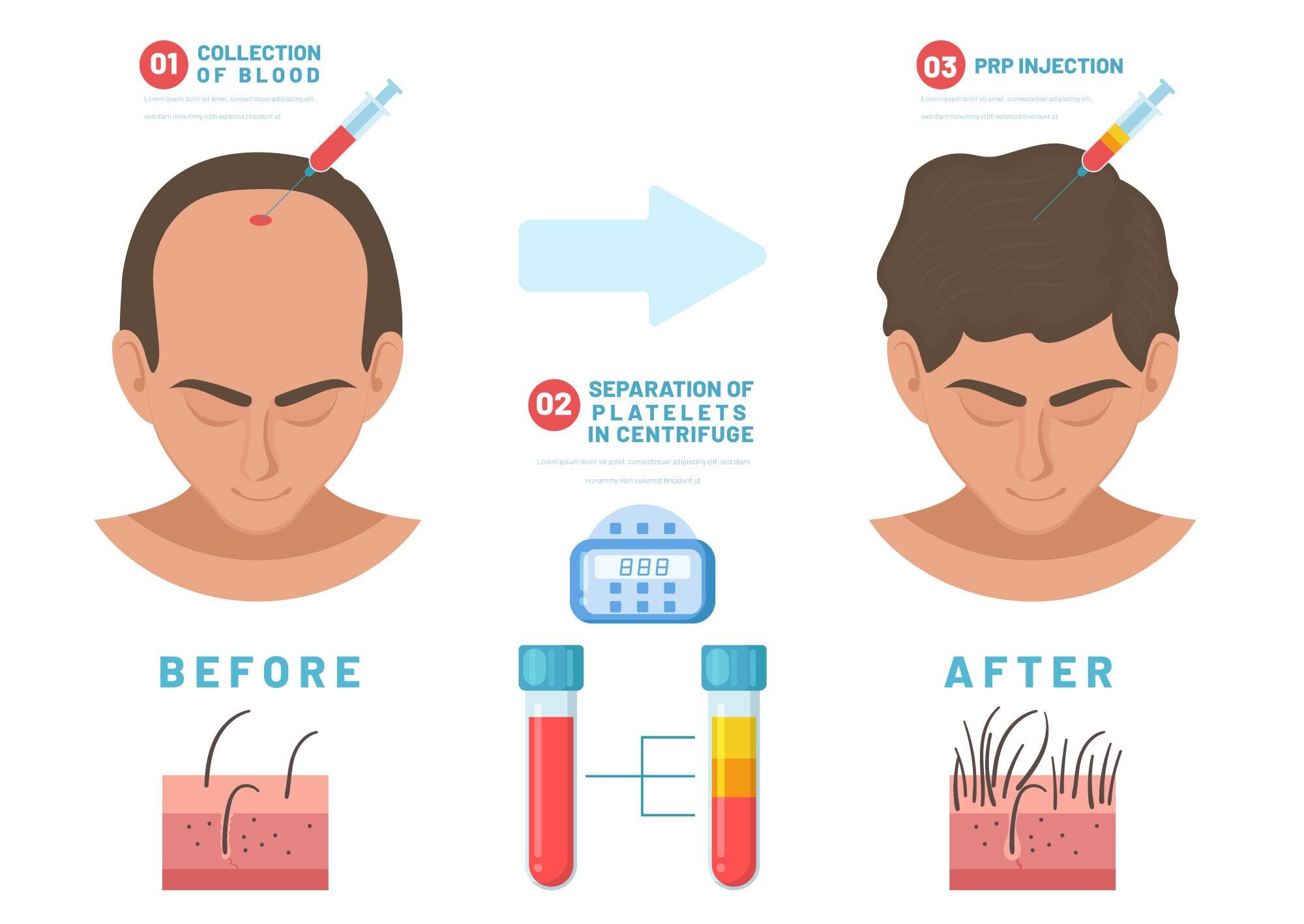


Hair loss can be a challenging experience, affecting not just appearance but also confidence. While various treatments promise results, Platelet-Rich Plasma (PRP) therapy has emerged as a revolutionary solution for hair regrowth. PRP treatment leverages the body’s natural healing abilities to stimulate hair follicles and encourage healthy growth. Here, we delve into the science behind PRP and how it works to combat hair loss, brought to you by Folliskin.
PRP stands for Platelet-Rich Plasma, a concentration of platelets derived from your own blood. Platelets play a crucial role in the body’s healing processes, releasing growth factors that promote tissue repair and regeneration. By isolating and concentrating these platelets, PRP treatment can deliver a powerful boost to the areas needing rejuvenation—in this case, your scalp.
Hair growth occurs in cycles, involving three phases:
Hair loss happens when follicles shrink or become dormant, leading to thinning hair or bald patches. PRP works by reactivating these dormant follicles and enhancing the growth phase.
The growth factors in PRP—such as platelet-derived growth factor (PDGF) and vascular endothelial growth factor (VEGF)—play a key role. These factors improve blood supply to hair follicles, reduce inflammation, and encourage the development of new hair.
PRP sessions typically last about 60 minutes. Here’s what happens:
Multiple sessions are recommended for optimal results, with visible improvements often noted after three to six months.
PRP is most effective for individuals experiencing:
It’s essential to consult with a specialist to determine if PRP is right for you.
PRP treatment is a promising option for those seeking a natural and effective solution to hair loss. Its ability to harness the body’s healing mechanisms makes it a preferred choice for many. At Folliskin, our team of experts is dedicated to helping you regain not just your hair but also your confidence. Schedule a consultation today to learn how PRP can transform your hair restoration journey.
Embrace the science of regeneration with PRP and rediscover the joy of healthy, voluminous hair!